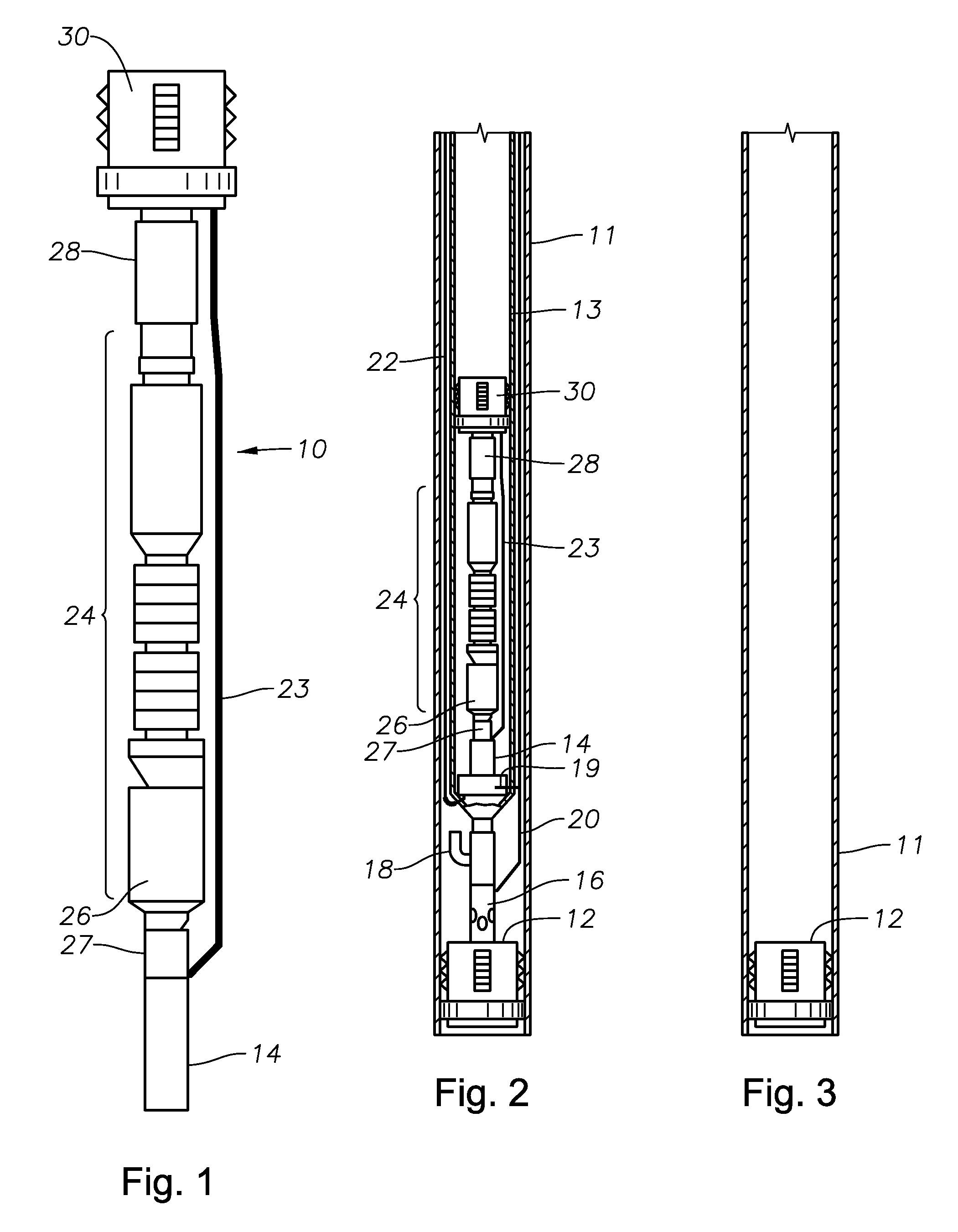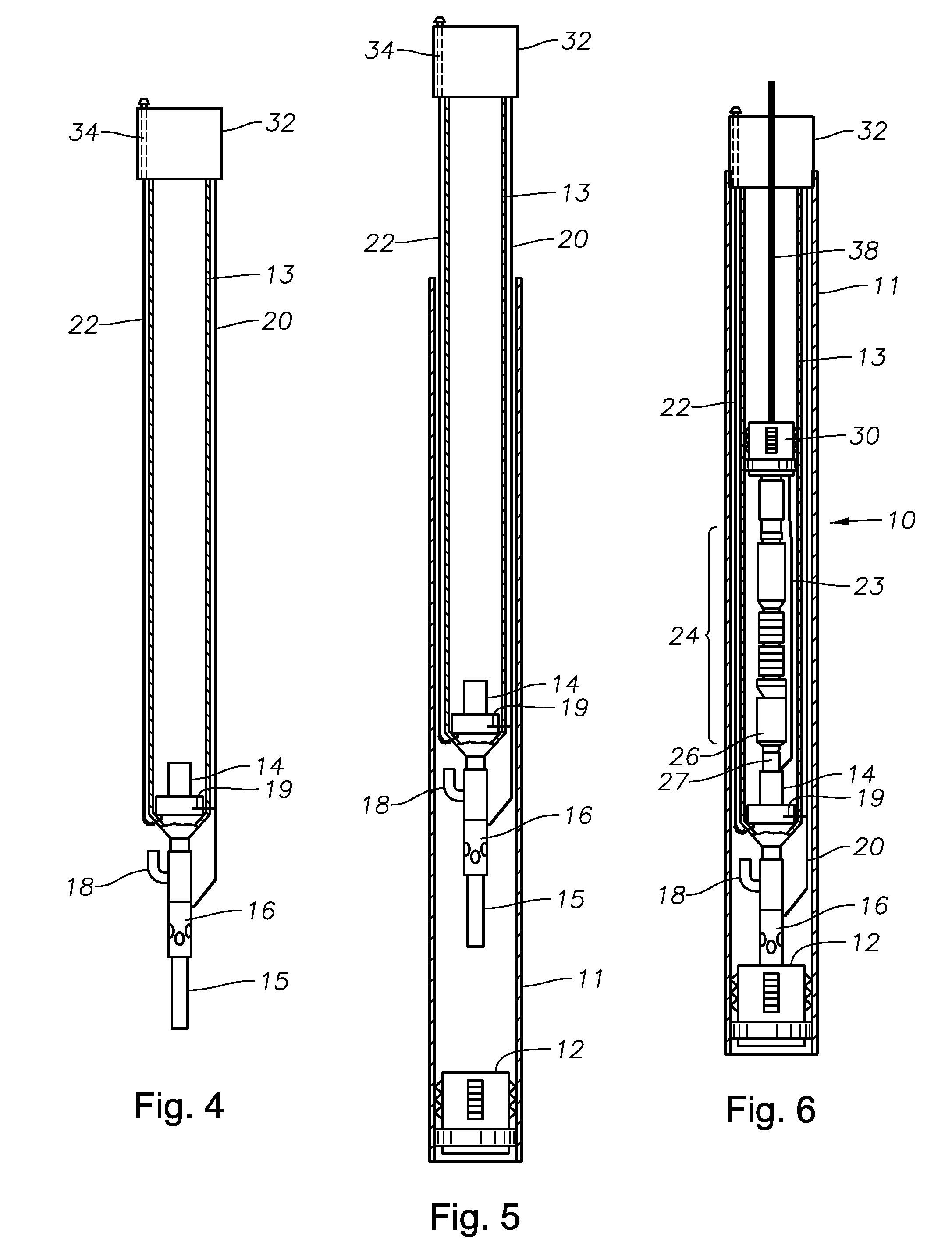In-well rigless esp
a technology of electrical submersible pumps and rigs, which is applied in the direction of fluid removal, borehole/well accessories, sealing/packing, etc., can solve the problems of environmental damage, critical and expensive resources of rigs in subsea or remote applications, etc., and achieves cost-effectiveness, reduce the overall cost of installation, and reduce the diameter of tubing strings
- Summary
- Abstract
- Description
- Claims
- Application Information
AI Technical Summary
Benefits of technology
Problems solved by technology
Method used
Image
Examples
Embodiment Construction
[0022]Referring to FIGS. 1 and 2, an embodiment of an in-well rigless ESP system 10 is shown outside and inside a tubing string 13 and a casing 11, respectively. The in-well rigless ESP system 10 includes a wet connector 14 that connects a hydraulic control line 19 to set a hydraulic packer 30, and also connects a power cable 22 to power a motor 26 of the ESP 24. The wet connector 14 is located in a tubular assembly. The tubular assembly is rigidly attached to the lower end of the tubing string 13. The wet connector 14 allows the power cable 22 and control line 20 coming from the surface to provide power to the ESP 24 and hydraulic control to the packer 30. A stinger 27 approximately at the base of the ESP system 10 has electrical conductors that mate with electrical conductors in the wet connector and hydraulic ports that mate with hydraulic ports in the wet connector. The packer 30 will seal the discharge of the ESP 24, which is driven by the motor 26 located at its base. An expan...
PUM
 Login to View More
Login to View More Abstract
Description
Claims
Application Information
 Login to View More
Login to View More - R&D
- Intellectual Property
- Life Sciences
- Materials
- Tech Scout
- Unparalleled Data Quality
- Higher Quality Content
- 60% Fewer Hallucinations
Browse by: Latest US Patents, China's latest patents, Technical Efficacy Thesaurus, Application Domain, Technology Topic, Popular Technical Reports.
© 2025 PatSnap. All rights reserved.Legal|Privacy policy|Modern Slavery Act Transparency Statement|Sitemap|About US| Contact US: help@patsnap.com



